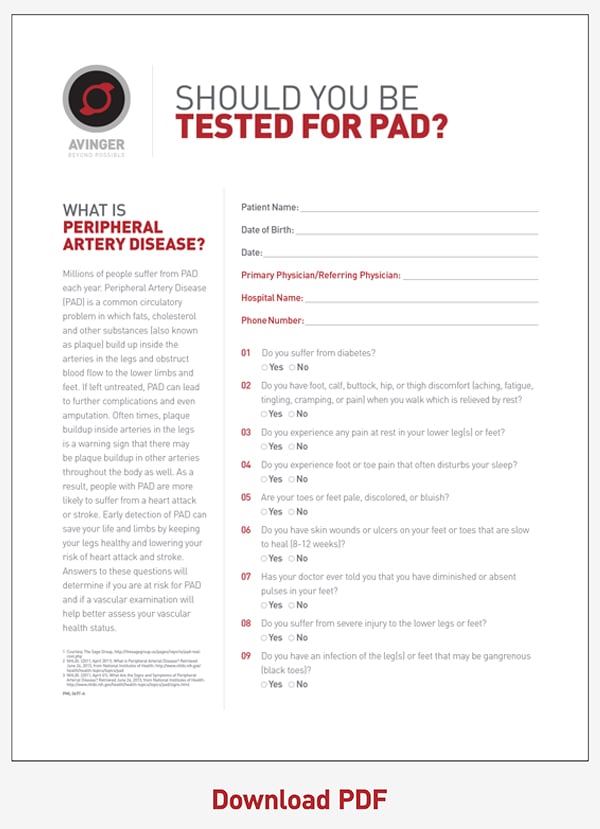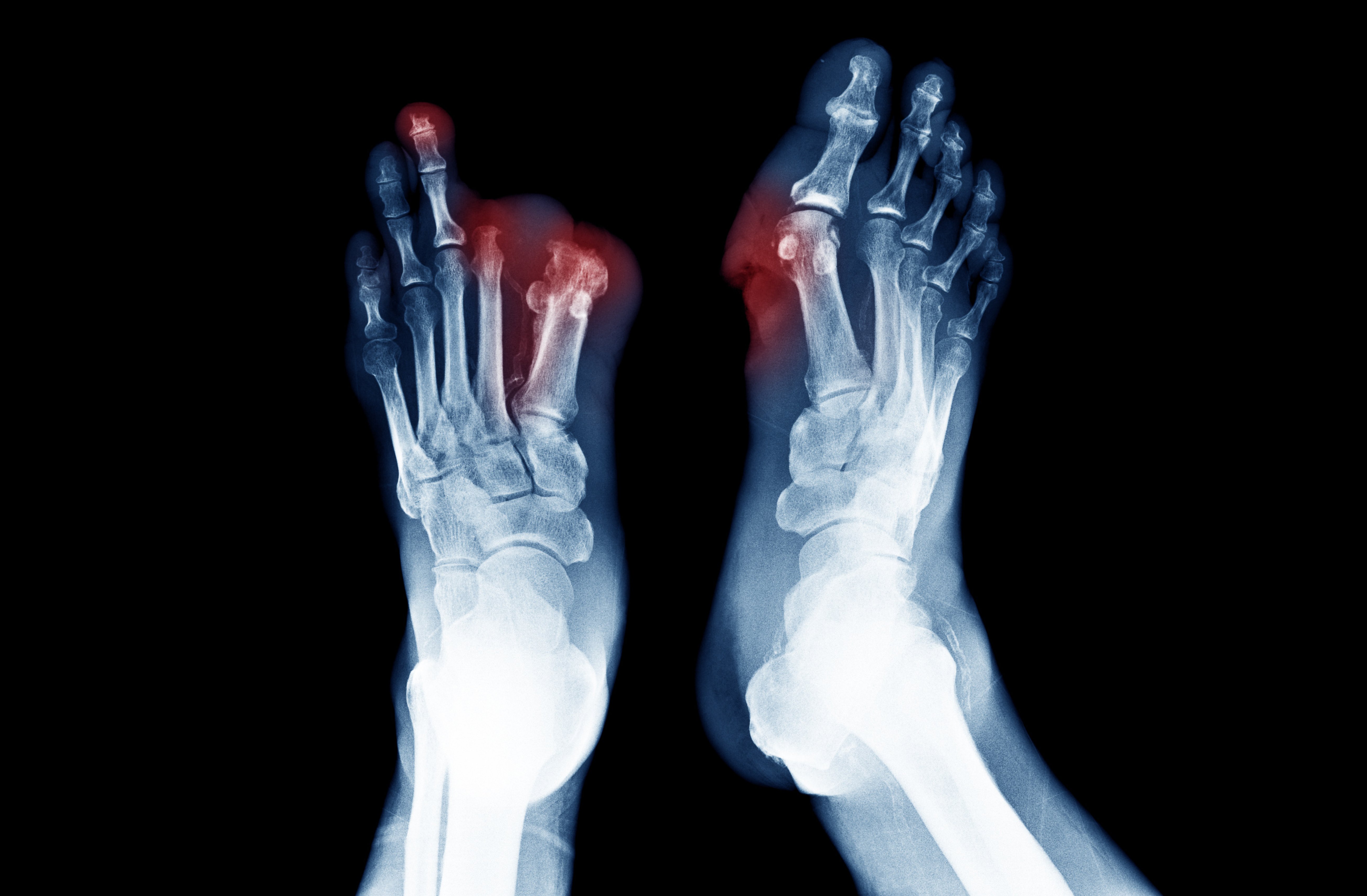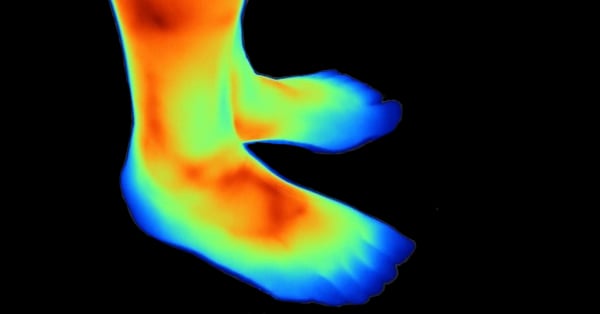Topics: Peripheral Artery Disease, PAD Symptoms, PAD Awareness Month, PAD Diagnosis
Answers to these questions will determine if you are at risk for PAD and if a vascular examination will help better assess your vascular health status.
What is Peripheral Artery Disease?
Millions of people suffer from PAD each year. Peripheral Artery Disease (PAD) is a common circulatory problem in which fats, cholesterol and other substances (also known as plaque) build up inside the arteries in the legs and obstruct blood flow to the lower limbs and feet. If left untreated, PAD can lead to further complications and even amputation.
Often times, plaque buildup inside arteries in the legs is a warning sign that there may be plaque buildup in other arteries throughout the body as well.
As a result, people with PAD are more likely to suffer from a heart attack or stroke. Early detection of PAD can save your life and limbs by keeping your legs healthy and lowering your risk of heart attack and stroke.
Answers to these questions will determine if you are at risk for PAD and if a vascular examination will help better assess your vascular health status.
References:
1 Courtesy The Sage Group, http://thesagegroup.us/pages/reports/pad-real-cost.php
2 NHLBI. (2011, April 2011). What is Peripheral Arterial Disease? Retrieved June 24, 2013, from National Institutes of Health: http://www.nhlbi.nih.gov/health/health-topics/topics/pad
3 NHLBI. (2011, April 01). What Are the Signs and Symptoms of Peripheral Arterial Disease? Retrieved June 24, 2013, from National Institutes of Health: http://www.nhlbi.nih.gov/health/health-topics/topics/pad/signs.html








